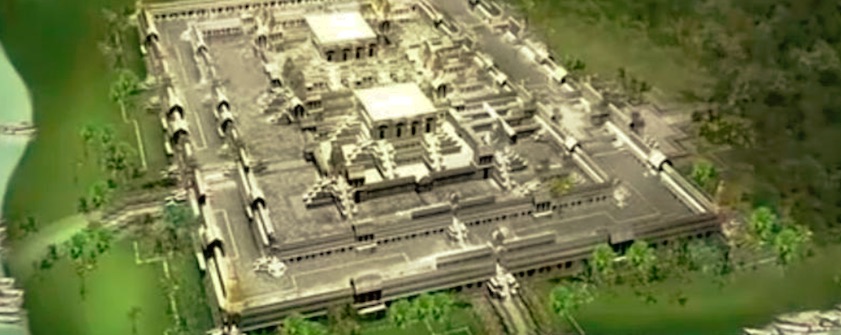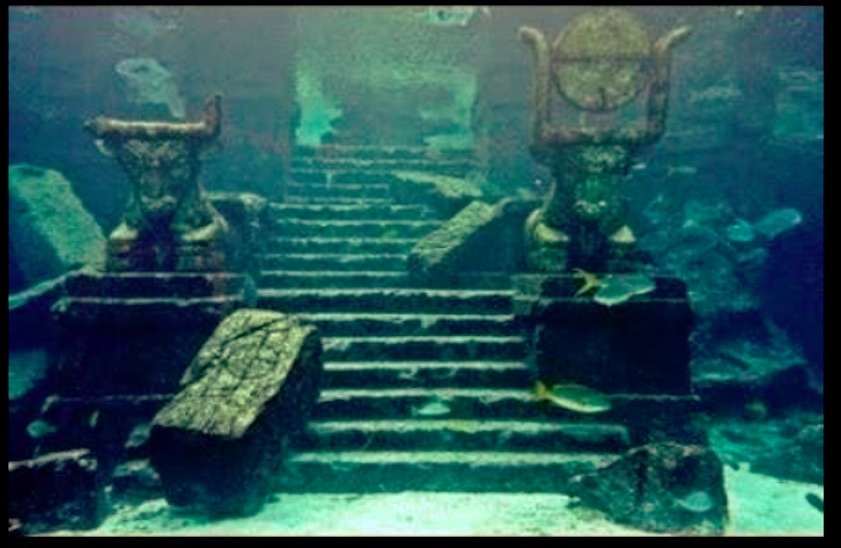Dwarka
This is a collection of articles archived for the excellence of their content. |
Historical origin

This is an artist’s view of what it probably looked like.
From: SANATAN SINHNAAD, The City of Dwarka had existed from 32,000 to 9,000 BC??, February 11, 2016: The Times of India

However, on October 1, 2019 it published FACT CHECK: These photos aren't proof of Sri Krishna's Dwarka in Gujarat in an article that was updated on Jun 15, 2023 The fact checkers concluded that this series of images are an artist’s conception of 'The Lost City of Atlantis'.

However, on October 1, 2019 it published [https://timesofindia.indiatimes.com/times-fact-check/news/fact-check-these-photos-arent-proof-of-sri-krishnas-dwarka-in-gujarat/articleshow/71385329.cms FACT CHECK: These photos aren't proof of Sri Krishna's Dwarka in Gujarat in an article that was updated on Jun 15, 2023 The fact checkers concluded that this series of images are an artist’s conception of 'The Lost City of Atlantis'..
1 The City of Dwarka had existed from 32,000 to 9,000 BC??
The modern city of Dwaraka is to be found in Saurashtra and is a great pilgrim centre since our scriptures declare it to be the seat of the Yadava clan and Lord Krishna’s capital. However according to the stories mentioned in many of the Puranas like, the Mahabharata, Harivamsa, Vishnu Purana etc. that fabled city of Dwaraka had been washed away into the sea. Soon after the Lord left his mortal body, the city was washed away as he had predicted, the scene of which has been graphically described above.
2 Dwaraka excavation
In 1983 some excavations were done outside the modern city of Dwaraka, which revealed the existence of a glorious city of ancient times. They found seven temples one on top of the other. The bottom most one was the most interesting since it showed many pottery shards and seals which clearly pointed to the existence of a fantastic city at about the time mentioned in the Mahabharata. These findings encouraged the Marine archaeology centre of the National Institute of Oceanography, to take up a serious work along the coast of the island known as Bet Dwaraka.
3 Dwaraka Coast
The strongest archaeological support for the existence for the legendary city of Dwaraka, comes from the structures discovered in the late 1980s under the seabed off the coast of modern Dwaraka in Gujarat by a team of archaeologists and divers led by Dr S.R. Rao, one of India’s most respected archaeologists. An emeritus scientist at the marine archaeology unit of the National Institute of Oceanography, Goa, Rao has excavated a large number of Harappan sites, including the port city of Lothal in Gujarat.
4 The Lost City of Dwaraka
In his book “The Lost City of Dwaraka”, published in 1999, he writes about his undersea findings: “The discovery is an important landmark in the history of India. It has set to rest the doubts expressed by historians about the historicity of the Mahabharata and the very existence of the city of Dwaraka.”
5 Dwarka
Conducting 12 expeditions during 1983-1990, Rao identified two underwater settlements, one near the present-day Dwaraka and the other off the nearby island of Bet Dwaraka. This tallies with the two Dwarakas mentioned in the epic. These underwater expeditions won Rao the first World Ship Trust Award for Individual Achievement.
6 UnderWater Dwarka
Another important find by the divers was a conch seal that established the submerged township’s connection with the Dwaraka of the Mahabharata. The seal corroborates the reference made in the ancient text, the Harivamsa that every citizen of Dwaraka had to carry such a seal for purposes of identification. Krishna had declared that only one who carried such a seal could enter the city. A similar seal has been found onshore.
7 Dwarka Fortification
From 1998 to 2001 many underwater explorations were set about which pointed out to a highly civilised city which must have existed at that site, which had great maritime connections with many other countries and which must have been washed away by something like a tsunami or some such hurricane. Dwaraka was a large well- fortified city with an excellent drainage system, massive gates and a wall stretching about hundred eighty miles.
8 Krishna
All these findings have suddenly roused a lot of interest amongst all Hindus both in India and abroad since it is solid proof of the existence of one of the favourite gods in the Hindu pantheon, namely Lord Krishna. It was a sprawling city with gardens and orchards and bastions, with a population of about 10 thousand people. There are many clues which point out to the fact that it must also have been a bustling port. Many ancient anchor stones give ample evidence of this.
9 Glory of Dwarka
Around the same time archaeologists from other countries were also busy. Along the coast of the Bay of Cambay and off the coast of modern Dwaraka, they found evidence of a settlement deep under the sea. In seventy feet of water, they found sandstone walls and cobbled streets. Looking up the descriptions of the city of Dwaraka as found in the ancient Hindu scriptures they realised that this must be the remains of the legendary city of Dwaraka ruled by the great God King, Krishna.
10 32000 to 10000 BC
Wood and pottery chards were found that can be dated back to 32,000 years again proving that the time limits set in ancient Hindu scriptures might be true even though most westerners dismissed it as being absurd. But now with these findings they cannot help but believe, if they want to believe. For many years now western Indologists have shut their eyes to the glory that was ancient India. The city had existed from 32,000 to 9,000 BC.
11 This discovery proves that the life of Krishna is not mere mythology but it is a true, historical record of a towering personality who had lived on this holy land of India.